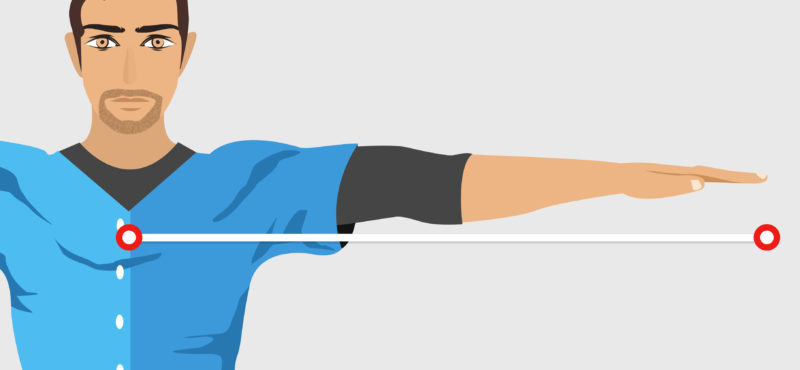I’m sure you know that having the right baseball bat can improve your swing and you performance overall.
There have been many innovations in technology especially where it concerns baseball bats and softball bats. All these changes have happened over the past 10 years.
Today bats are no longer just made of aluminium, they can now be made of composite. composition material is know for making a ball jump off the bat more efficiently when hit.
It is important to be aware of the types of bats that are allowed to be used for specific occasions.
Age and a players are the two things that determine the baseball bat that can be used.
The information we provide below will make buying and sizing your baseball easier.
Measuring A Baseball Bat For A Child
If you’re buying a bat for a child, the measuring process changes slightly.
If the child is between 3’ and 3’4” in height, you will need to start with a 26-inch bat and add an extra 1 inch for every 4-to-5 inches that they grow.
Measuring A Baseball Bat for a Bigger Child
Step One
When measuring the height of a child you will need to ensure that they are wearing their cleats when the measurement is taken.
Step Two
Use a bat as a guide by standing it along side the child. The bat should not go past the child’s hip, but it should reach the hip. A bat that reaches past the hip will be too long.
Step Three
Next you will need to weigh the bat to get the best fit possible. The best combination of weight and height will ensure the child gets the best swing possible from the bat.
Some General Rules for Bat Weight
A child that is less than 60 pounds is usually best swinging a bat that is between 26 and 29 inches long
A child that is more than 70 pounds in weight, is best using a bat that ranges from 28 to 32 inches in length
Choosing the Best Weight For a Baseball or Softball
When choosing the weight of a baseball bat there are some things worth understanding.
What’s Drop Weight Mean?
The minus or drop weight is how a bat is measured. The drop weight is the difference between a bats length and weight.
So for example if a bat is 25 inches long and has a drop weight of – 5, it will weigh 20 ounces.
*Important Note:
High school baseball bats and college bats are not permitted to have a drop that is less than – 3
It is not uncommon for a batter that feels they are stronger to want a heavier bat, but this is a myth. The idea is to have a bat you can swing which generates the right amount of requirement in the batting zone.
It may sometimes take a bit of time to find the right balance for your bat, but once you do you’ll be hitting the ball farther than you may have first thought possible.
When you have your bat length it’s essential to then take into consideration weight of the bat.
If the bat is for youth baseball and softball, a taller child will require a longer bat. Because of their age chances are they’re not strong enough to have a bat that is too heavier, which means they would require a bat with a larger weight drop.
Finding the right balance between length and weight is important because it will effect the physics of the batters swing.
A longer light bat can be swung faster, but it will have less inertia behind it.
A short bat that’s heavy will mean a slower swing, but much more inertia.
The bat that is chosen is always going to come down to personal choice like picking any other equipment. Too make the best possible decision you should combine comfortability as well as the style of player you are.
If you feel like you are good at making runs, you might not be overly concerned with losing inertia when you swing,
If your game is more based around wanting power and you want to hit home runs, a short heavier bat will have the inertia you are looking for.
Check out some baseball bats at amazon here now you have the information for choosing a bat. If you already have a bat and drop weight, that’s great you can find the perfect bat at the best price on Amazon.
If you don’t have a bat size yet, you can go to a local bat store to get measured, and then check online to find the best deal. Happy bat hunting!








